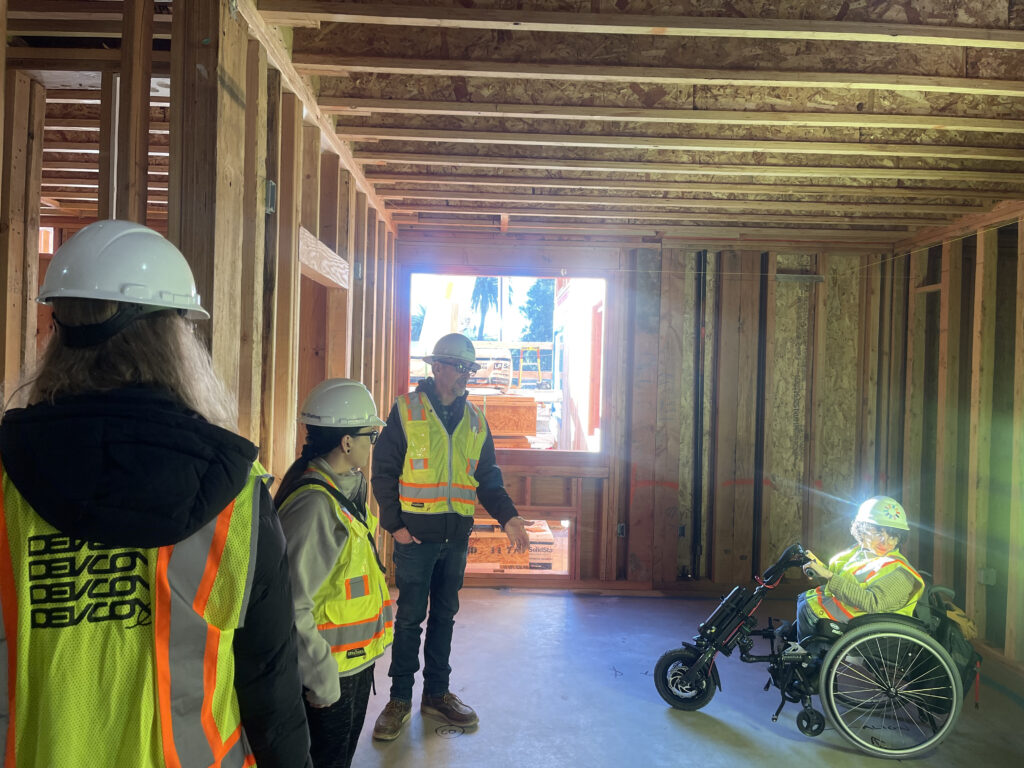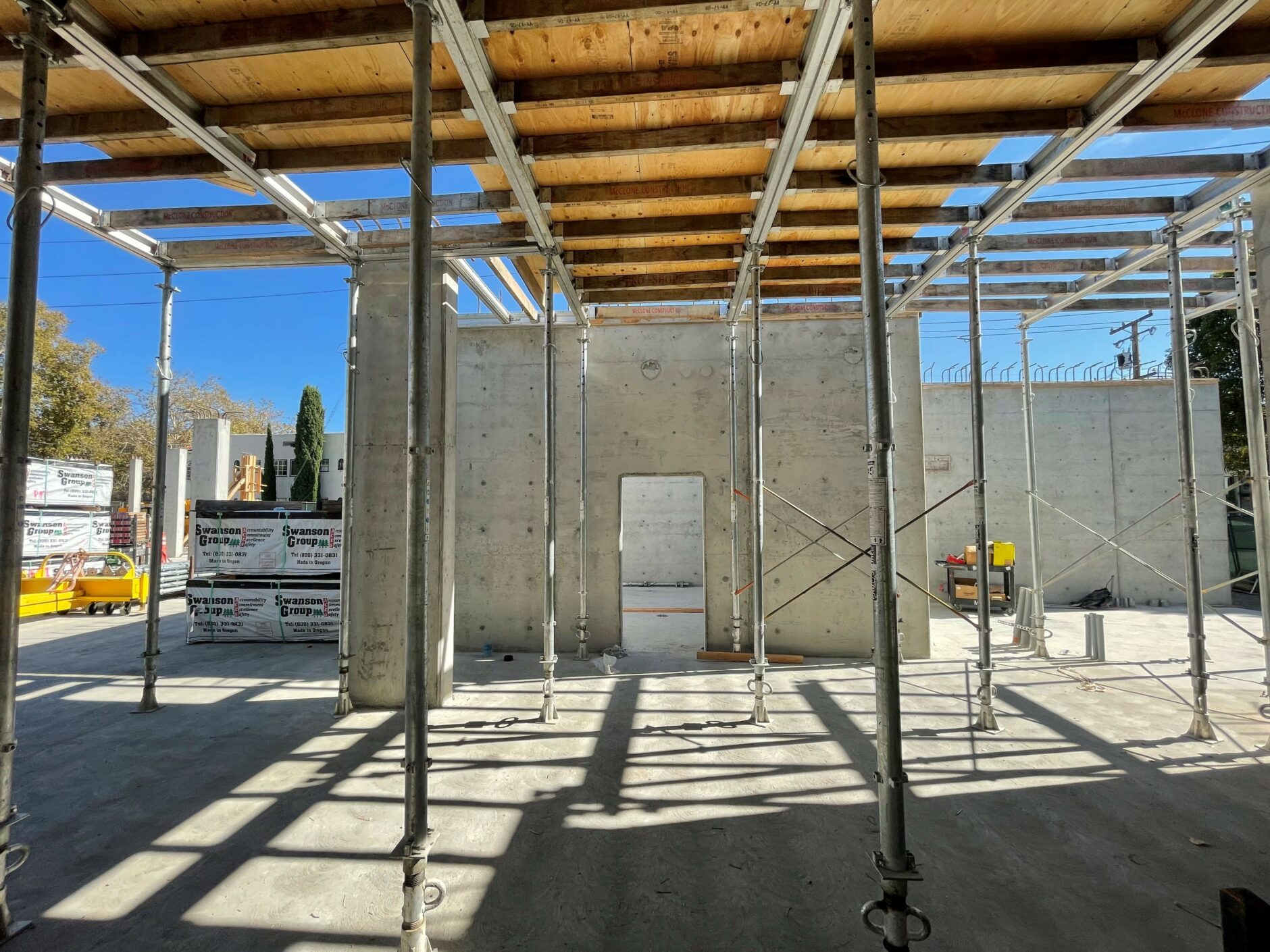In July 2022, construction began on The Kelsey Ayer Station in San Jose, California. The six-story building includes 115 apartments, with a mix of two-bedroom and studio homes. Rents include individuals earning 20% of median income, defined as extremely low income, up to those earning 80% of median, often considered “missing middle” housing. 25% of the homes are reserved for people with disabilities who use supportive services. The community will open to residents in spring 2024.
This was the first project of its kind developed and The Kelsey’s inaugural housing development. The process took 3 years and 7 months from site acquisition to groundbreaking, and multiple partners who contributed to the development. We’re committed to open-sourcing every detail of this project from financing details, key steps, to things we would have approached differently. This article outlines the timeline, funding, partnerships, and key learnings from the development process to guide others undertaking similar work.
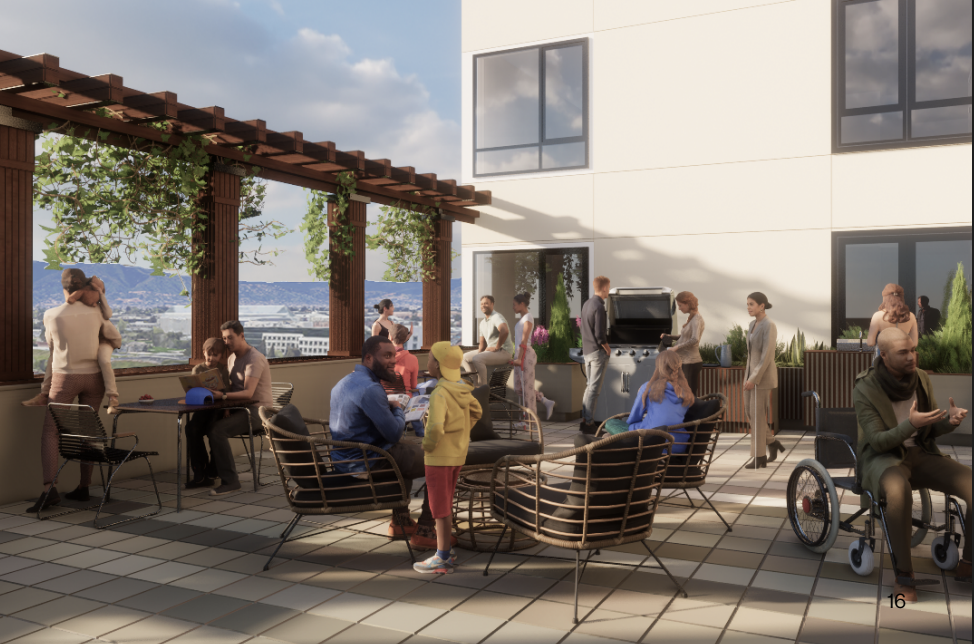
Community Overview
Slated for completion in May 2024, The Kelsey Ayer Station is a fully accessible and truly inclusive housing community, supporting diverse physical, sensory, and support needs. The development’s location, within a transit-oriented neighborhood a few blocks north of downtown San Jose, provides proximity to jobs, community, culture, and services. On-site amenities include a community lobby, fitness room, maker space, rooftop resident terrace, sensory garden, and dog run, along with pet-friendly units, support staff offices, bike parking, and transit passes and coordination. The Kelsey Ayer Station will also feature The Kelsey’s Inclusion Concierge, who will build community for residents with and without disabilities and connect them to outside support and services.
The community is developed on an infill site in San Jose, California just north of downtown, and located 500 feet from a light rail stop. An infill site is when housing is constructed on vacant, underused lots interspersed among older, existing properties in established neighborhoods. In the case of The Kelsey’s site, the lot was a small office building and larger parking lot located in an established, transit-oriented, residential community.
After leading community engagement in the Bay Area focused on the need for housing that was affordable, accessible, and inclusive of people with disabilities, our Together We Can Do More work, The Kelsey began to look at sites to implement the kind of housing that would meet the need and demonstrate what works. The Kelsey made our first option deposit on this San Jose site in October 2018.
Timeline
Here is a detailed overview of the timing and key steps to design, finance, and develop The Kelsey Ayer Station. In the middle of our development process, shortly after the site was entitled, the COVID-19 pandemic hit, which was a significant factor to manage on our newly entitled but not yet financed project. In the field, affordable housing development typically takes between 4-7 years and disability-focused projects take between 3-10 years. Our total time from start to construction was just under 3 years and seven months and our total development timeline, to when the building opens, will be just under 6 years.
2018
- April – December: The Kelsey’s “Together We Can Do More” community organizing campaign
- October: Acquired project site, zoned as commercial property
- October: Applied for funding from the City of San Jose Housing Department NOFA
2019
- February: Brought on Sares Regis as development partner
- March: Rezoned from commercial to residential
- March: Kicked off planning and early design process
- April: Formed Community Advisory Group and began initial community outreach
- June: Received funding from City of San Jose
- September: Google predevelopment loan secured
2020
- March: Project is fully entitled via SB 35
- March: COVID-19 pandemic and initial shelter in place
- April: Applied for Transit-Oriented Development (TOD) state funding, received January 2021
- Ongoing: Applied for and secured philanthropic funding
2021
- December: Complete final design documents
- February: Round 1 Tax Credit application, not funded
- May: Round 2 Tax Credit application, not funded
- September: Round 3 Tax Credit application, awarded!
- December: Awarded Tax Credits and Bonds
2022
- January: Closing process begins
- June: Groundbreaking event and community celebration
- July: Financing closed
- July: Construction begins
Construction will conclude in spring 2024 when the building will open to residents. Resident services planning began in January 2023 and the community’s Inclusion Concierge™, our services staff, will be hired in late 2023 to support lease up and move in. Marketing and leasing will begin in October 2023.
Funding
The Kelsey Ayer Station was funded in a blend of public, private, and philanthropic funding. Initial land deposits were made through philanthropic funds raised by The Kelsey. The Kelsey put $600,000 of philanthropic raised funds at risk on the project, in land and early design and development costs, before securing predevelopment lending from Google’s affordable housing funding. That $5.3M loan, eventually increased to $6.9M, was the first loan made out of Google’s fund. That loan repaid the initial philanthropy The Kelsey put in the project and funded the project’s development, design, permitting, and planning until construction and permanent funding sources were secured. That predevelopment loan was paid back at closing in July 2023. For more information on financing affordable housing check out Development and Finance Basics in the Learn Center).
The construction and permanent funding sources for the project included mostly public funding sources, but that was coupled with critical philanthropic support that helped anchor key elements of The Kelsey’s mission around accessible design, inclusive residential services, and deep affordability. The first public source to commit to the project was the City of San Jose and funding from the Affordable Housing Notice of Funds Available (NOFA). This early public funding was a key partner for this project, serving as an anchor to bring in other public sources with and ensuring city leadership was committed to the community’s success from the earliest days of the project. The key learnings below outline the importance of these two funding sources.
Our total budget for the project was $75M. This is approximately $650,000 cost per unit of housing. While this cost is high, this is in line or below the typical affordable housing cost in the Bay Area which is $600,000 – $1,000,000 per unit.
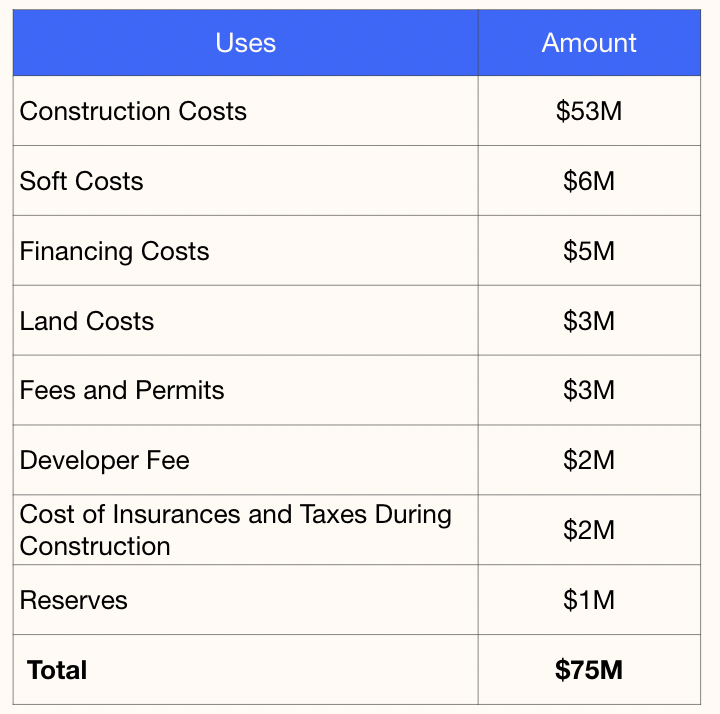
The funding sources include construction sources, the funds used during the 2-3 year construction period, and permanent sources that stay in the project following that period.
Construction Sources
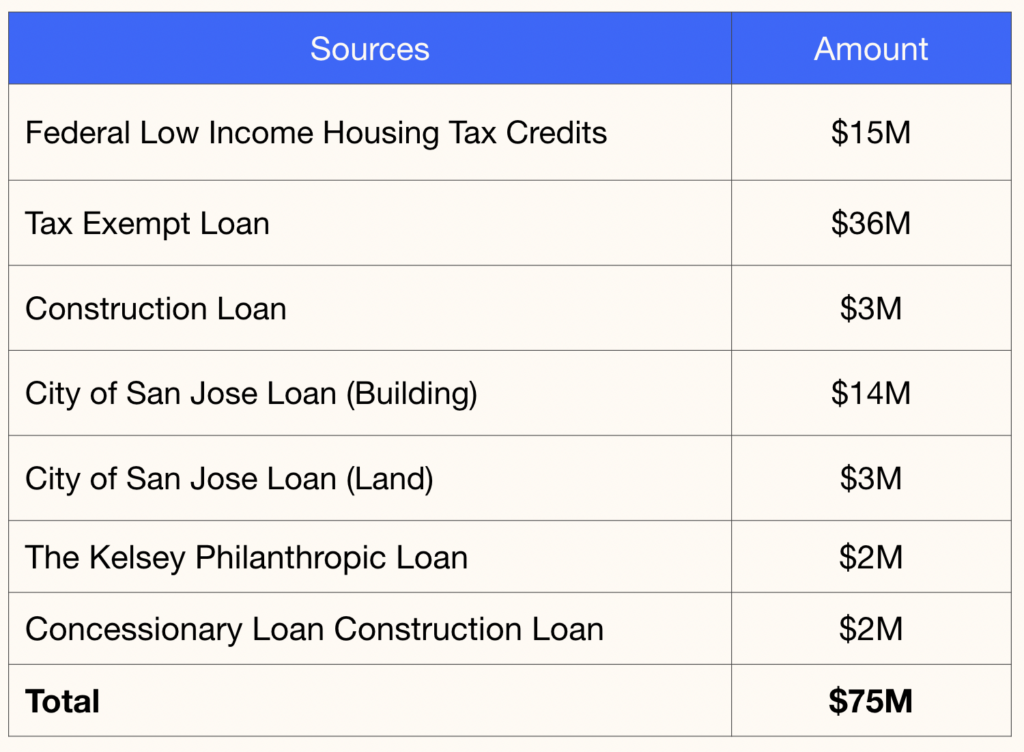
Permanent Sources
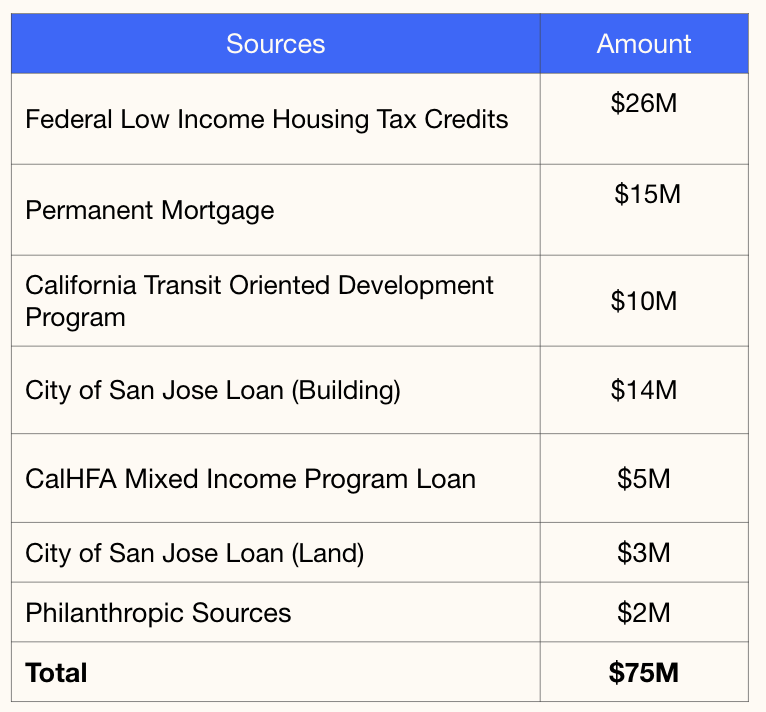
Key Learnings
Our project team and partners learned along the way what was critical in the creation of this disability-forward housing and what key steps should be repeated in the future, as well as what should be done differently.
Securing Local Support and Utilizing Policy
Building housing of any kind in California is difficult. As a first-time affordable housing developer looking to build in the San Francisco Bay Area, The Kelsey faced significant hurdles with high costs, difficult public processes, and competitive financing sources. The Kelsey also had to deal with community skepticism as we attempted to erect the first multifamily affordable housing in a predominantly single-family neighborhood. While the City of San Jose had identified the location as ideal for new, denser, transit-oriented housing, The Kelsey faced initial resistance from local residents.
The Kelsey worked hard to win community trust through holding one-on-one meetings with residents and building community advisory groups. Our team spent a lot of time sitting in people’s living rooms addressing their concerns and talking about the project’s benefits. We invited community members with and without disabilities to join as advisors and explained in detail what this housing would mean for future residents who were able to access it. The Kelsey invested over a thousand hours of work over more than a year to introduce our model to the community around the site, address concerns, and learn about the neighborhood. Ultimately, the neighborhood supported this housing project because of our community-driven approach to development.
Coupled with community engagement, The Kelsey also has policy tools to support entitlement. In the final stages of getting approvals to build, The Kelsey faced challenges from a single source that would have added over a year of time to the project and significant costs. In order to avoid this, our team used a 2018 California law, SB35, allowing developers to take advantage of a streamlined approval process. After over a year of community engagement, The Kelsey utilized SB35 to finalize our entitlements with our approvals coming in just days before the COVID-19 shelter in place began.
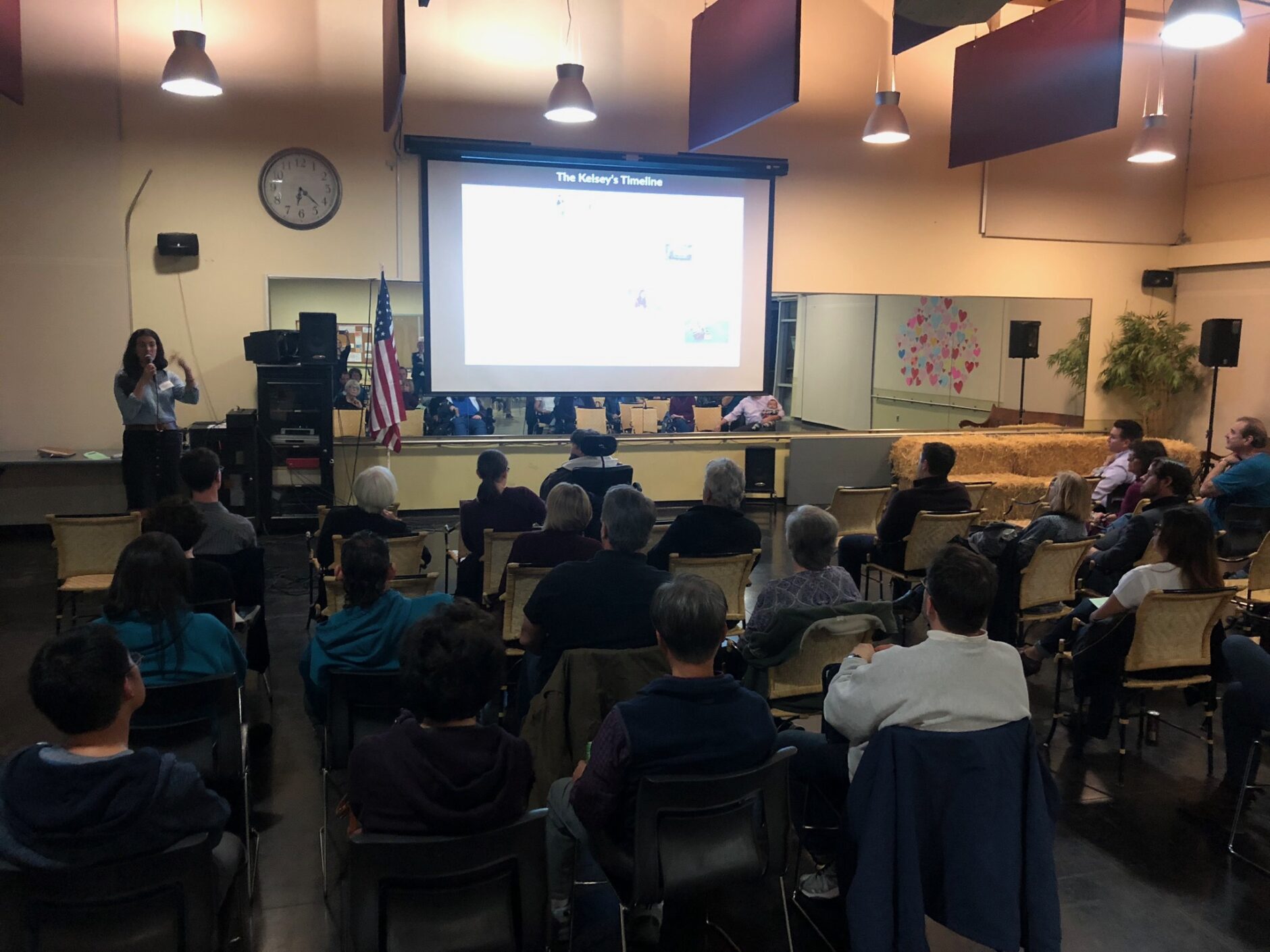
Flexible and Mission-Oriented Philanthropy
Philanthropy ultimately accounted for less than 4% of the total project funding sources. But that funding was critical as magnets for other funding, creating leverage with other sources, and securing key project elements that will be critical for future residents. This kind of funding was particularly impactful at the earliest and final stages of the project financing, serving as funding bookends on the community.
The Kelsey was able to secure the site thanks to unrestricted funds already raised from CZI, which funded The Kelsey’s Together We Can Do More work in the Bay Area. When a low cost and well-located site became available, The Kelsey needed to move quickly on the opportunity with land deposits and a rezoning process which included cost in fees. Having these funds, from a funder who believed in our mission and supported our spending as we saw fit, allowed us to do so. Over the first 10 months of the development process, before predevelopment funds were secured, The Kelsey continued to put philanthropy into the project to fund design fees, permitting, and other development costs. We phase-gated this funding based on key milestones. For example, we only spent $100,000 of our funding before we had the permanent funding commitment from the City of San Jose. Once that funding commitment came through, we were confident in the project’s viability to continue to advance predevelopment costs. We exceeded $250,000 in our funding after our initial predevelopment loan MOU was executed with Google. While that loan was finalized over several months, we were able to continue design and development and the associated costs, knowing those funds would be repaid to The Kelsey with that loan.
Funding from philanthropy also played a critical role in the final funding of the project. Anchored by a $1M grant from The Harry and Jeanette Weinberg Foundation and coupled with funding from generous individual donors, The Kelsey committed $2M in philanthropic funding as part of the construction and permanent sources of the project. While public financing sources were enthusiastic about inclusive housing, much of their primary interest was in affordability and less on the disability-forward nature of development. Little public subsidy currently exists for housing focused on people with disabilities. This philanthropic funding served as a valuable source of owner equity for The Kelsey to ensure that the project retained key project elements that support an inclusive and accessible resident experience. While public and private financing sources in the project capital stack came with their own priorities and requirements, the philanthropic dollars that anchor on the disability-forward vision for the community help ensure those elements are not lost in things like value engineering, other compliance, and project evolution.
Initially, The Kelsey anticipated larger philanthropic funding for the project, targeting a raise of $10-15M in total. This proved significantly more difficult to secure than planned. This was particularly true because many individuals who fund disability-forward projects do so to secure homes for their loved ones to eventually live there. The Kelsey anchored this project from the beginning on deeply affordable homes for people with disabilities and that those homes would be distributed through a lottery. This made the project less appealing to some philanthropists. Affordable housing, in the form of project capital, is also a less robust pool of philanthropy and that which does exist did not necessarily include disability as part of their funding mandate. These factors, combined with fundraising during a global pandemic and related economic challenges, proved difficult. As a result, The Kelsey shifted to focusing on public sources that could meet the project goals, retain the disability-forward features, and serve deep affordability. Our organization focuses now more on the critical role of public subsidy in disability-forward housing and how to increase the amount of that funding available and improve how it is used to support inclusive models.
Public Funding Anchors the Community
The City of San Jose’s early support was essential to moving The Kelsey Ayer Station to the next step. In October 2018, The Kelsey responded to the city’s competitive housing request for proposal, and in June 2019 it awarded the nonprofit gap funding. In total, the City of San Jose provided $17.4 million in financing to the project. The City of San Jose supported The Kelsey as a new developer in the field and also at an early project phase. That support allowed The Kelsey to leverage additional public funders to support the project alongside them, including the State of California and the US Department of Housing and Urban Development. Ultimately public funding was the primary funding source for this housing community.
The City of San Jose also rallied around the theme of disability access and inclusion, demonstrating genuine excitement about serving this population within its housing portfolio. San Jose had already completed projects that included some disability support, but not to the extent that The Kelsey was proposing. Instead of treating The Kelsey Ayer Station as a one-off, the city infused The Kelsey’s model across its housing pipeline and added elements from The Kelsey’s Inclusive Design Standards as part of the scoring criteria for how it evaluates funding for new affordable housing projects across their pipeline. These kinds of public sector partnerships help create scaled impact for new models of housing, ensuring they are broadly available to communities and reach more individuals beyond those able to access a single project like The Kelsey. Supporting public adoption of affordable, accessible, inclusive housing models is a key part of how The Kelsey approaches our development process.
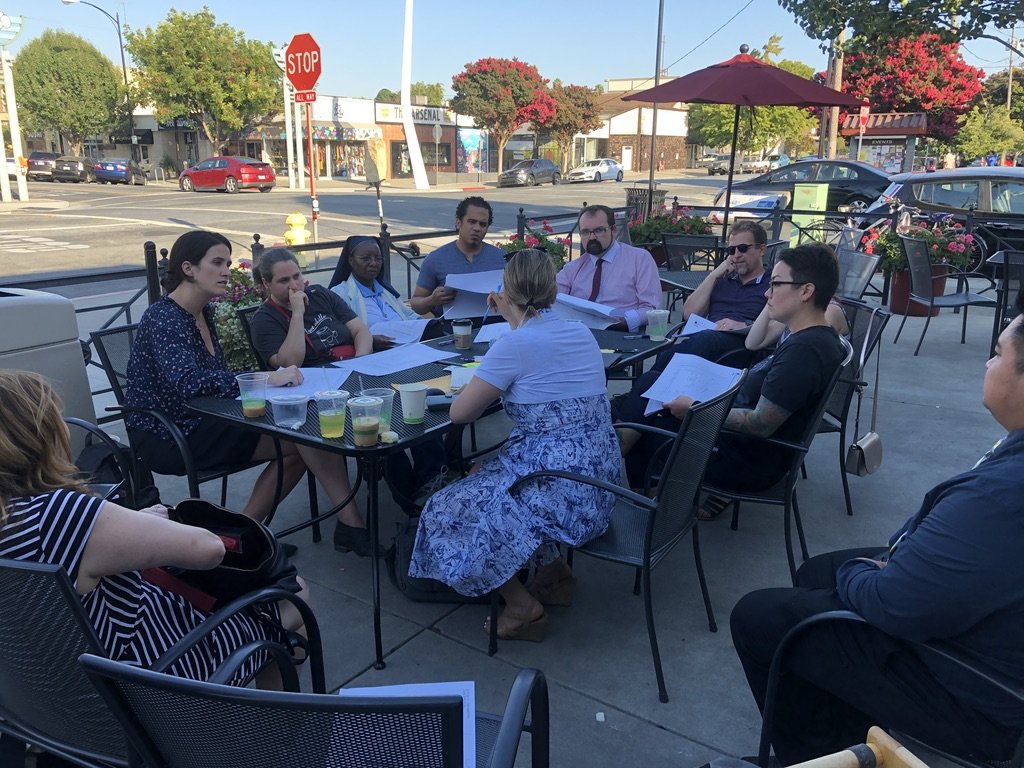
Developing with Partners
The Kelsey created The Kelsey Ayer Station in partnership with two co-developers who had housing development experience in the Bay Area: Sares Regis Group of Northern California and Devine and Gong (DGI). DGI, an affordable housing finance and development organization, managed and coordinated funding and did all the underwriting. Sares Regis, a market-rate developer supported the site acquisition process, led the entitlements and design phases with The Kelsey’s guidance on disability-forward features, and oversees construction. Both partners contributed significantly to the success of the community in San Jose and are deeply committed to the affordable, accessible, and inclusive housing being created. But, partnership requires careful planning and execution to ensure effective implementation and integrity of mission.
A critical first step in using any development partnership is clarity of project goals and priorities. As the lead developer, The Kelsey outlined specific project goals and priorities at the early stages of the project before securing partners. This ensured that our co-developers — as well as designers, engineers, and construction partners — understood the project as we aimed to create it. We see in some co-development cases that experienced developers drive the project in a way that can lose features of accessibility, mission-oriented features, or resident services. Outlining the must-haves, nice-to-haves, and other elements from the start retain project integrity and maintain stronger partnership.
It’s also important to understand how your project partners impact your ability to secure certain financing, which we learned in our process with The Kelsey Ayer Station. We learned that although partners may have extensive experience developing housing including affordable homes through inclusionary requirements, they may not meet the definition set by public funders. Public funding, as well as other sources, have very specific definitions of threshold requirements of development teams to secure funds as well as other developer characteristics that can make projects more competitive for funding. It’s important to anticipate early in a project lifecycle what kinds of funding you seek to secure and how that dictates the exact characteristics of your development team. Joint ventures are an important tool to build capacity of organizations so they can meet the thresholds of experience required by public partners.
Moving Forward
The learnings outlined here at The Kelsey in San Jose detail design, development, and financing affordable, accessible, and inclusive housing. They don’t explore resident services and the community experience, which we look forward to sharing more on after the community has opened.
With The Kelsey Ayer Station under construction, and construction having just begun on our second community in San Francisco at The Kelsey Civic Center, The Kelsey is working on development in new markets and providing support to many community organizations and developer groups looking to build their own disability-forward housing. Contact us or attend office hours to learn more about these existing projects or explore partnership opportunities.
If you’re in your own housing development processes be sure to check out these resources that may support you in your work.
- Getting Started Guide: The First 5 Things to do to Develop Inclusive Housing
- How to Choose a Development Partner
- The Housing Design Standards for Accessibility and Inclusion
- Development and Finance Basics
